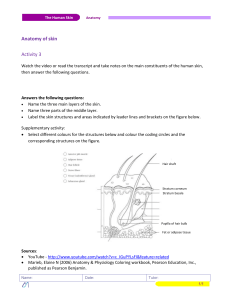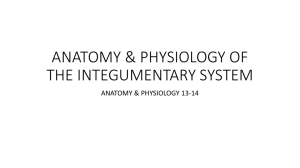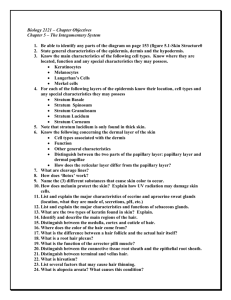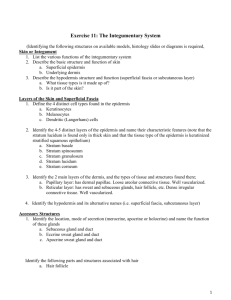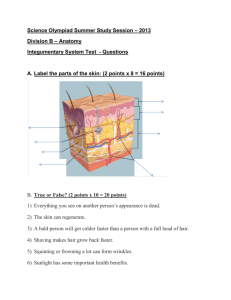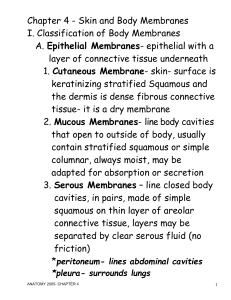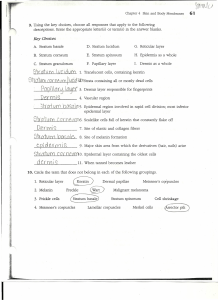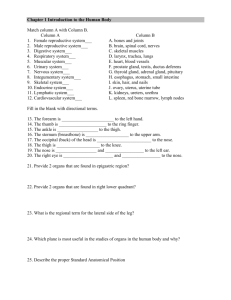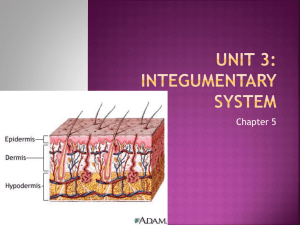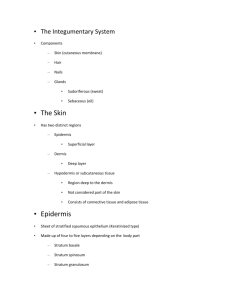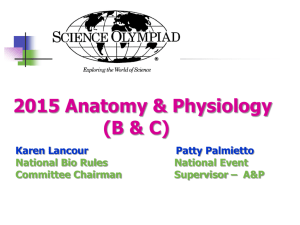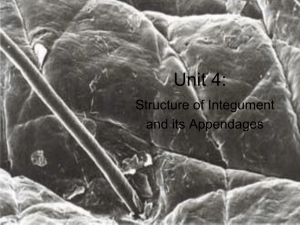Unit 3 Integument Objectives
advertisement
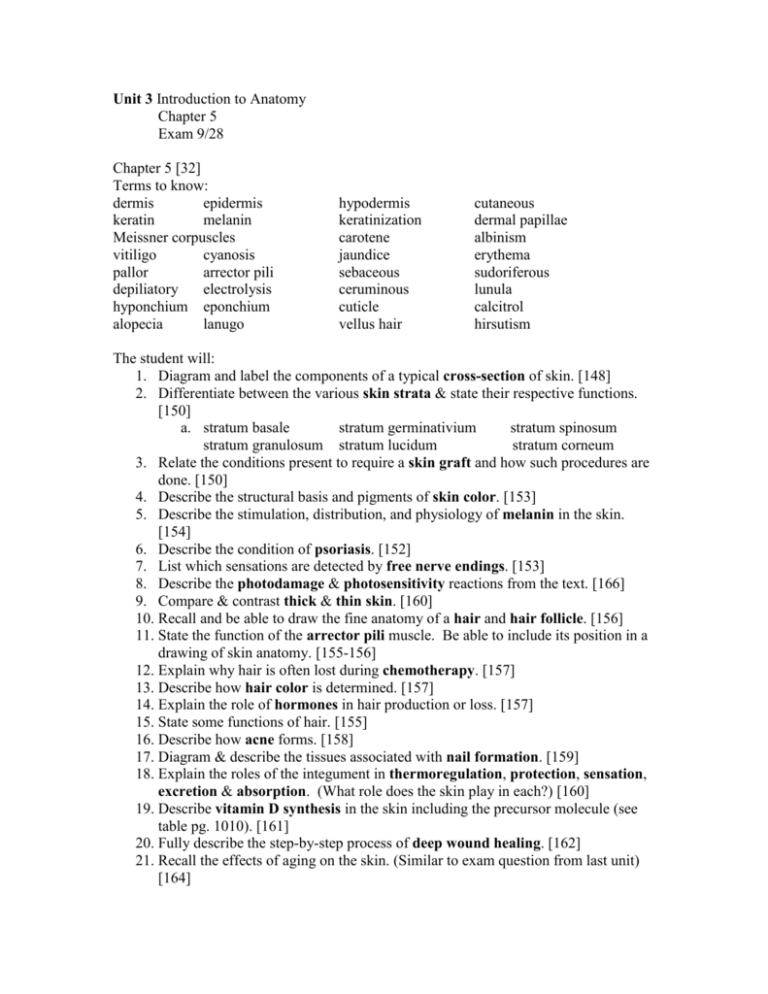
Unit 3 Introduction to Anatomy Chapter 5 Exam 9/28 Chapter 5 [32] Terms to know: dermis epidermis keratin melanin Meissner corpuscles vitiligo cyanosis pallor arrector pili depiliatory electrolysis hyponchium eponchium alopecia lanugo hypodermis keratinization carotene jaundice sebaceous ceruminous cuticle vellus hair cutaneous dermal papillae albinism erythema sudoriferous lunula calcitrol hirsutism The student will: 1. Diagram and label the components of a typical cross-section of skin. [148] 2. Differentiate between the various skin strata & state their respective functions. [150] a. stratum basale stratum germinativium stratum spinosum stratum granulosum stratum lucidum stratum corneum 3. Relate the conditions present to require a skin graft and how such procedures are done. [150] 4. Describe the structural basis and pigments of skin color. [153] 5. Describe the stimulation, distribution, and physiology of melanin in the skin. [154] 6. Describe the condition of psoriasis. [152] 7. List which sensations are detected by free nerve endings. [153] 8. Describe the photodamage & photosensitivity reactions from the text. [166] 9. Compare & contrast thick & thin skin. [160] 10. Recall and be able to draw the fine anatomy of a hair and hair follicle. [156] 11. State the function of the arrector pili muscle. Be able to include its position in a drawing of skin anatomy. [155-156] 12. Explain why hair is often lost during chemotherapy. [157] 13. Describe how hair color is determined. [157] 14. Explain the role of hormones in hair production or loss. [157] 15. State some functions of hair. [155] 16. Describe how acne forms. [158] 17. Diagram & describe the tissues associated with nail formation. [159] 18. Explain the roles of the integument in thermoregulation, protection, sensation, excretion & absorption. (What role does the skin play in each?) [160] 19. Describe vitamin D synthesis in the skin including the precursor molecule (see table pg. 1010). [161] 20. Fully describe the step-by-step process of deep wound healing. [162] 21. Recall the effects of aging on the skin. (Similar to exam question from last unit) [164] 22. Explain autologous skin transplantation. [151] 23. List complications that may result from tattooing or body piercing. [154] Labs: Diagram & label skin cross-section slide using the diagram pg.148. Diagram and label a slide of one of your own hair roots. Map 3 regions of the body for Meissner's corpusles. Find the mean distance of those 3 regions and write a conclusion comparing their relative sensitivity. Skin your cat. Project: Be sure to correctly cite all references. The Dracula gene (erythropoietic protoporphyria) OR (gravy for both) The werewolf gene (congenital generalized hypertrichosis) What are its symptoms? What is it’s cause? Whom does it affect? What is the treatment? What is the long term prognosis for sufferers? Project: Read the article “Sun Struck” from Science News. V. 168. no. 7. August 13, 2005. pp. 99. http://www.sciencenews.org/view/generic/id/6477/title/Sun_Struck_Data_suggest _skin_cancer_epidemic_looms Science news Login: khaggard@usd343.org Password: kaws Design and submit some form of presentation to inform the student body(ies) of the inherent risks of tanning. This might help: Tavera-Mendoza, L.E., & J.H. White. “Cell Defenses and the Sunshine Vitamin”. Scientific American. v. 297. n. 5. pp. 62.
